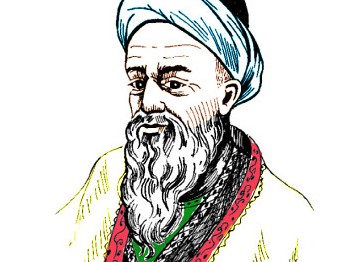
Oratory and oratorical culture in Central Asia and especially in Uzbekistan have very deep roots in the past. Oratory has significant historical background and ideological sources. It received much attention in the past. There are great legacy left by the talented representatives of oratory.
The Uzbek translation of the word “oratory” is “voizlik”, which comes from Arabic word “va’z”, that means to propagandize or guidance; the word “voiz” represents the meaning “orator, speaker”. Making speeches and persuading people or the listener influencing their mind and intellect is being called now oratory.
In the old East (until the IX century), shahs and caliphs were the main orators. They gathered the people on Fridays, holy days and made speeches about the citizens’ responsibilities and duties (including obedience, complying with laws); the situation abroad; deeds of foes; defense policy and etc.
From the IХ century, the state rulers charged the skillful speechmakers with speaking to public and began to call them “voiz” that is the orators. The title “voiz” was added to their names.
The first orators in Central Asia who had great contribution to the development of this skill were Bahauddin Valad (ХII century), Jalaliddin Rumiy (ХIII century), Husayn Koshifiy, Muin Voiz (ХV century) and others.
From XII century there were written many scientific, historic, and methodological manuals that taught and explained the theory and practice of oratory. Among them, “Avbob ul-jinon” by Muhammad Rafiq Voiz, “Ziyo ul-maqol” by Voiz Kazviniy, “Ahsan ul-hodis” by Voiz SHirvoniy, “Hidoyat ul-taqvim” bu Muhammad Voiz, “Anis ul-voizin” by Quraysh Saidiy, “Ravozat ul- voizin” by Voiz Samarqandy, “ Mitfoq ul-najjih” by Voiz Oshiy, “Dah majlis” and “Mahzan ul-insho” by Voiz Koshifiy are of main importance.
In addition, the works of historians, poets, theologians also included some ideas related with oratory. For example, in books such “Zafarnoma” by a historian Ali Yazdiy, “Majolis ul-nafois”, “Mantiq ut-tayr”, “Mahbub ul-qulub”, “Hamsa”, “Chor devon” of Alishiir Navoiy, “Badoe ul vaqoe” by Zaynuddin Vosifiy, ( xv century), “Makorim ul Ahloq” by Hondamir there was the concept of the writers about the skills, talent of great orators, the ways of oratory and others. Alishir Navoiy stated that the orators made their speeches with strong temperament and emotions like mad.
There were three types of voizs that is orators: Dabirs, Hatibs, and Muzakkirs. The first was occupied with reporting all the documents in state level and notifying the people, the second was engaged in commending the rulers On Fridays before the praying, the third was charged with explaining the religious, ethic, and juridical matters on Fridays, holy days and other celebrations after the khatib. Then, the type of edification in Islamic way, amri ma’ruf, also was added to the duties of orators.
The oratory was divided into three according to the positions, political and social ranks, and other features of the audience and was named each different. The first was focused on high rank officials and the rich and was named as sultoniyot; the target of the second type of oratory was the soldiers and it was jihodiya, the last was directed to the people and was called as garibona.
The object of sultoniyot was singing the rulers praises. They were always flattered, that is to say, they were the centre of personality cult and crawling. Jihodiya praised patriotism, bravery, courage, heroism, guts, and devotion, everyone was asked to be involved in jihad. Garibona was expressed in urging the poor to be loyal and calm. Each type of oratory had its own criteria, methods, and tones of voice.
The Middle Age orators were taught rhetoric in order to reach effectiveness of each word, phrase and tone, to be able to touch an audience with a particular idea, thought, concept, ideology, and opinion. The subject is still on the curriculum of madrasas. Ordering and resonant tones were dominating features of that age oratory. That was the reason why they achieved social significance, political power, and artistic polished. Like all other historical factors, oratory also had social and political characteristics. It was inevitable in a society where people were divided into the rulers and the obedient people, the rich and the poor, the religious and secular groups. The orators tried not only to make their speeches effective and surefire for the audience, but also used them as the means of defending the interests of a particular social class. Consequently, the speeches became strong ideological weapons and were accepted with great interest by the people, who imagined the rulers as the shadows of Creator on the Earth, as the followers of the Prophet. This made them embrace the speeches of orators wholeheartedly.
Most of the orators in the past of Uzbek people were self-critical, that’s why they paid more attention to the quality of their speeches, not the number. They felt great responsibility towards their audience: for this reason they never appeared before the people without gaining enough information and knowledge. This can be assumed as a huge heritage for modern Uzbek orators and it would be better if they follow their ancestors’ lead. Because, there is a close connection between the Old Oriental oratory and the modern oratory culture. The modern pedagogy specialists, professors, writers and poets should be worthy successors of the spiritual heritage left by our ancestors for us.


